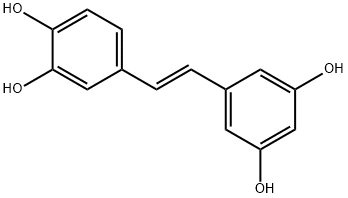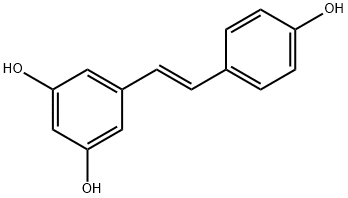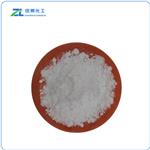Description
Piceatannol is a chemical compound with similar structure to resveratrol, being widely existed in vegetables such as grapes, blueberries and passion fruit. It is capable of inhibiting the growth of immature adipocytes, so as to achieve the purpose of weight loss. In addition, it also helps prevent cancer, heart disease and neurological diseases.
In early April 2012, researchers in Purdue University has published a new study in 《Biochemistry》journal, finding that piceatannol can delay the production of new fat cells, and inhibit the growth of immature fat cells into mature cells, which can help control the obesity. The researchers also claim that while this study shows that red wine helps to lose weight, further research is needed to improve the stability and solubility of the white fat to maximize its effect.
Laboratory preparation: 3, 4-dimethoxybenzyl alcohol is used as the starting material; to obtain the target product; the raw material needs to undergo bromination, Arbuzov rearrangement reaction, Wittig-Horner reaction and demethylation reaction.
Application
Antioxidants, having anti-inflammatory, anti-thrombotic, anti-cancer, anti-cancer, anti-hyperlipidemia, anti-bacterial activities.
Description
Piceatannol (10083-24-6) is a naturally occurring analog of resveratrol (Cat.# 10-1057). Inhibits nonreceptor kinases Syk and Lyk (IC50 approximately 10 μM).1 Piceatannol stimulates Sirt1.2
Chemical Properties
yellow to golden or green crystalline powder
Uses
Piceatannol has been used:
- to study its effect on Ataxia-Telangiectasia Mutated (ATM) protein kinase
- as an inhibitor of ZAP-70 (ζ-chain-associated protein kinase 70)
- as an inhibitor of MRP1-mediated 2′,7′-bis-(carboxypropyl)-5(6)-carboxyfluorescein (BCPCF) transport in intact human erythrocytes and inside-out erythrocyte vesicles (IOVs)
Uses
A human metabolite of Resveratrol (R150000). Piceatannol is strong anti-oxidant.
Definition
ChEBI: A stilbenol that is trans-stilbene in which one of the phenyl groups is substituted by hydroxy groups at positions 3 and 4, while the other phenyl group is substituted by hydroxy groups at positions 3 and 5.
General Description
A cell-permeable, substrate competitive and reversible plant metabolite that inhibits the activity of rat liver protein kinase A catalytic subunit (IC
50 = 3 μM), PKC (IC
50 = 8 μM), MLCK (IC
50 = 12 μM). In RBL-2H3 cells, the selective inhibition of Syk by piceatannol results in inhibition of FceR1-mediated signaling. Also inhibits wheat embryo Ca
2+-dependent protein kinase (CDPK) (IC
50 = 19 μM), and p72
syk (IC
50 = 10 μM), a non-receptor tyrosine kinase, relative to Lyn in isolated enzyme preparations. Also possesses anti-leukemic properties. Reported to activate sirtuins and promote the survival of eukaryotic cells.
Biological Activity
Anti-inflammatory, immunomodulatory and antiproliferative agent. Inhibits p56 lck and syk protein tyrosine kinases and inhibits TNF-induced NF- κ B activation and gene expression. Synthesis results from conversion of resveratrol (5-[(1E)-2-(4-Hydroxyphenyl)ethenyl]-1,3,benzenediol ) by cytochrome P450 1B1.
Biochem/physiol Actions
Cell permeable: yes
References
1) Seow et al. (2002), Piceatannol, a Syk-selective tyrosine kinase inhibitor, attenuated antigen challenge of guinea pig airways in vitro; Eur. J. Pharmacol., 443 189
2) Howitz et al. (2003), Small molecule activators of sirtuins extend Saccharomyces cerevisiae lifespan; Nature, 425 191





